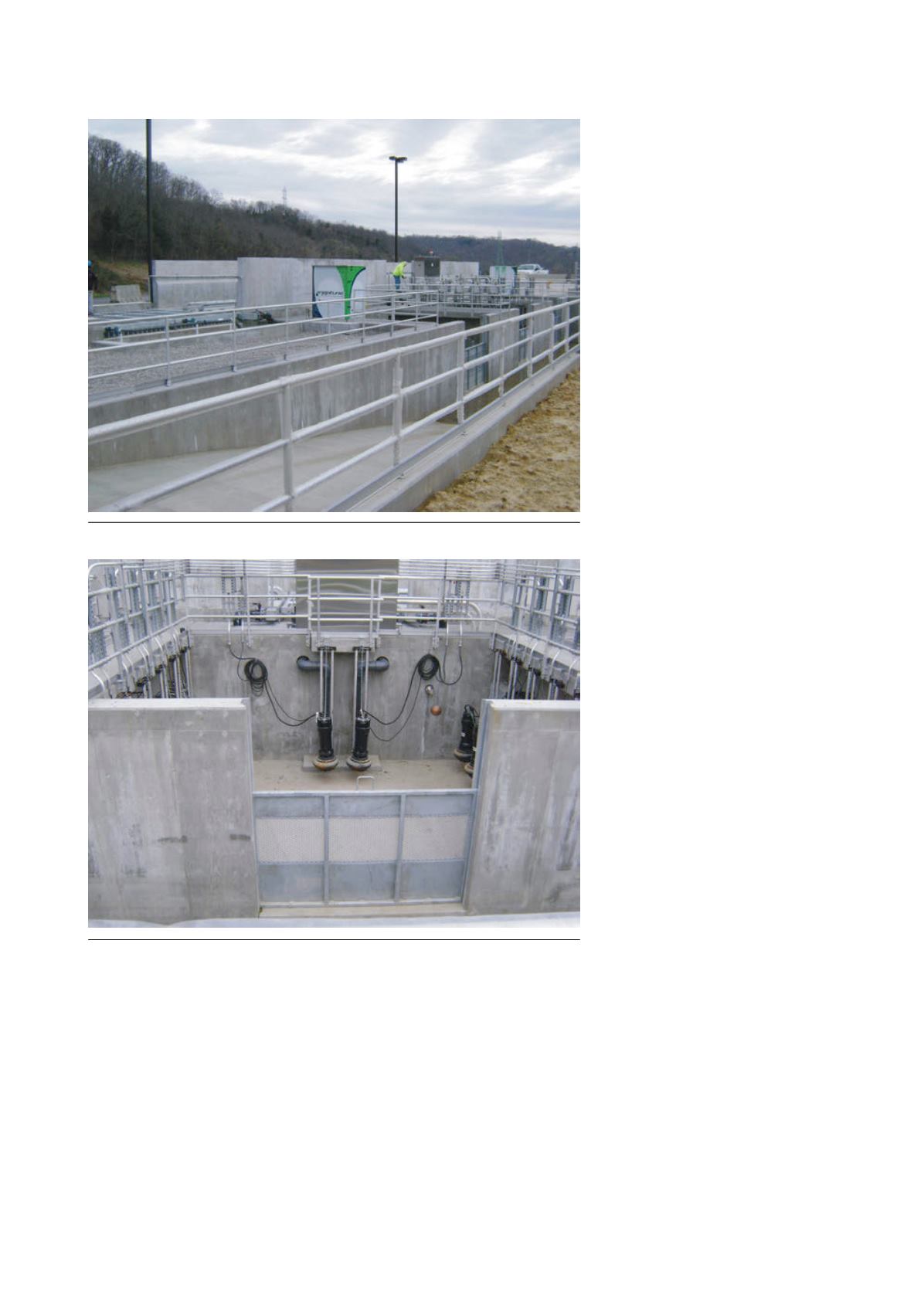
remain in compliance with its own
SWPP plans and to eliminate
track‑out. Manufactured at its plant
in Hot Springs, Arkensas, Neptune
Wheel Wash Systems are custom
configured to meet site specific
challenges. It has become
increasingly clear that there are
minimal commonalities for the sites
in the mining industry, but the
challenge to eliminate track-out is
the one constant commonality.
Operators run a wide range of
equipment, plant sites are in various
stages of maturity and different
materials require different pieces of
equipment. These individual site
factors make it imperative that the
operator and the equipment supplier
have a thorough discussion in
regards to operation at the site and
the long-term objectives. If a plant
operation is a high-traffic facility
with many years of viability ahead,
then a large, permanently installed
wheel wash is warranted. If the
facility is being remediated and is no
longer operational, then a system
that can easily be removed or
relocated is a much more practical
solution. If the hauling operation will
be for a short term or is outsourced,
perhaps a temporary solution or
equipment rental is the best
alternative. There are many
site-specific aspects to be covered,
such as whether excavation will be
allowed, affordable access to water
and electricity, and the level of
soiling on the tyres, before the
correct solution for any site can be
determined. With standard wash
platform lengths ranging from
12 ft – 48 ft, standard widths from
120 in. – 196 in. and closed loop
water recycling tank sizes ranging
from 5000 gal. – 100 000 gal. of water,
it is easy to formulate the correct
solution for any site, given a solid
understanding of what the
challenges are.
Though the size of the problem
will vary from site to site, there are a
few regulatory issues that need to be
dealt with at each and every site. To
prevent violations of the site’s
stormwater discharge permit, a
wheel wash that offers a completely
closed-loop operation is highly
recommended. The water used to
wash the tyres and to rinse the
vehicles needs to be contained, the
solids need to be removed and the
water needs to be reused. This can be
accomplished in a number of ways;
however, steps must be taken to
eliminate the possibility of
discharging water with high levels of
nephelometric turbidity unit (NTUs)
to the local sanitary sewer or fresh
water streams. In addition, the wheel
wash system must keep fugitive
particulate matter emissions at an
acceptable level. The wheel wash
system must include the necessary
attachments to cover 360˚ of dust.
Without meeting these two main
objectives, spending the money on a
wheel wash system could be a waste
of the plant’s time and money.
Twelve 20 hp pumps with auto coupler and stainless rail assemblies within a
50 000 gal. concrete tank.
Concrete tanks for 50 000 gal. of water.
56
|
World Coal
|
June 2016


